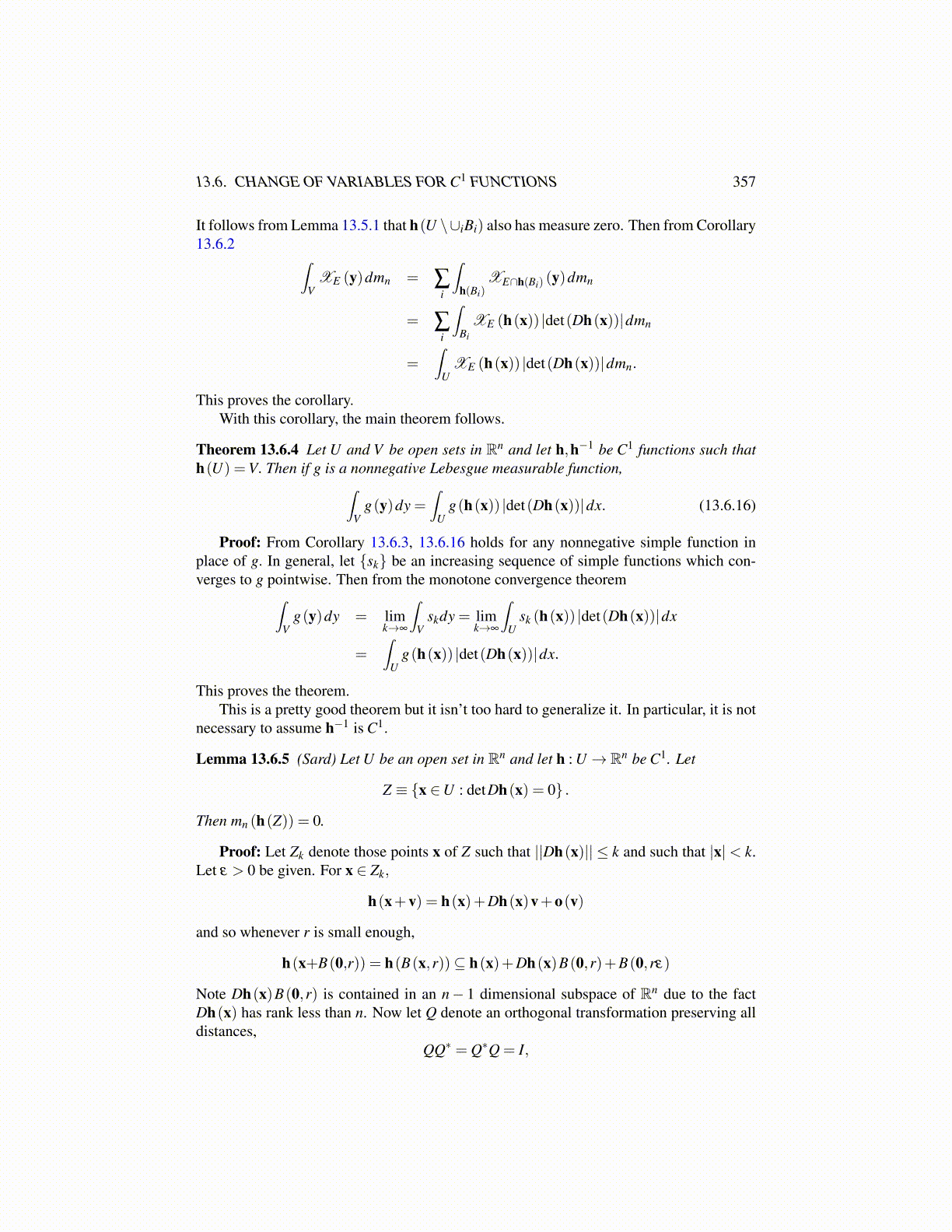
13.6. CHANGE OF VARIABLES FOR C1 FUNCTIONS 357
It follows from Lemma 13.5.1 that h(U \∪iBi) also has measure zero. Then from Corollary13.6.2 ∫
VXE (y)dmn = ∑
i
∫h(Bi)
XE∩h(Bi) (y)dmn
= ∑i
∫Bi
XE (h(x)) |det(Dh(x))|dmn
=∫
UXE (h(x)) |det(Dh(x))|dmn.
This proves the corollary.With this corollary, the main theorem follows.
Theorem 13.6.4 Let U and V be open sets in Rn and let h,h−1 be C1 functions such thath(U) =V. Then if g is a nonnegative Lebesgue measurable function,∫
Vg(y)dy =
∫U
g(h(x)) |det(Dh(x))|dx. (13.6.16)
Proof: From Corollary 13.6.3, 13.6.16 holds for any nonnegative simple function inplace of g. In general, let {sk} be an increasing sequence of simple functions which con-verges to g pointwise. Then from the monotone convergence theorem∫
Vg(y)dy = lim
k→∞
∫V
skdy = limk→∞
∫U
sk (h(x)) |det(Dh(x))|dx
=∫
Ug(h(x)) |det(Dh(x))|dx.
This proves the theorem.This is a pretty good theorem but it isn’t too hard to generalize it. In particular, it is not
necessary to assume h−1 is C1.
Lemma 13.6.5 (Sard) Let U be an open set in Rn and let h : U → Rn be C1. Let
Z ≡ {x ∈U : detDh(x) = 0} .
Then mn (h(Z)) = 0.
Proof: Let Zk denote those points x of Z such that ||Dh(x)|| ≤ k and such that |x|< k.Let ε > 0 be given. For x ∈ Zk,
h(x+v) = h(x)+Dh(x)v+o(v)
and so whenever r is small enough,
h(x+B(0,r)) = h(B(x,r))⊆ h(x)+Dh(x)B(0,r)+B(0,rε)
Note Dh(x)B(0,r) is contained in an n− 1 dimensional subspace of Rn due to the factDh(x) has rank less than n. Now let Q denote an orthogonal transformation preserving alldistances,
QQ∗ = Q∗Q = I,